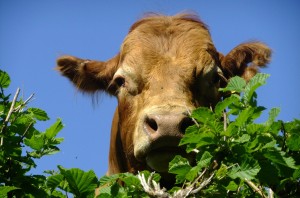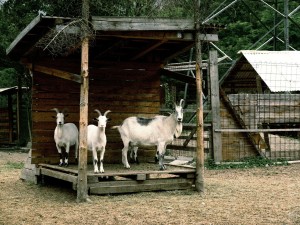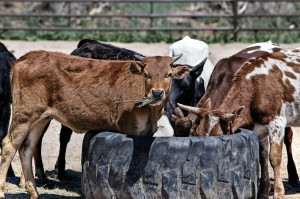Winter and fall are the toughest seasons for animals that spend the majority of their time outside. During the late fall and winter, the water can dry up or get frozen, and the pastures can become dry or covered with snow making it difficult to find food. For small farmers, it is important to decide which animals you want to carry through the winter. Select the beef or dairy cattle you want to keep, and sell the rest of your herd before the winter gets here. Small farmers are often not so commercially driven as larger farmers, and old-fashioned sentiment may influence their decision making process. However, there are financial and practical challenges that a farmer must face if cattle are going to emerge healthy and happy into spring pastures.
Feeding cattle during the fall and winter seasons is the most costly and also the most confusing part of cattle farming during the winter. When you have no grass on your pastures, you will often find it confusing to choose the right kind of feed for your animals. This is because of the wide variety of choices of feedstuffs, feed alternatives, fodder, supplements, ration types, and alternatives that can leave you confused. Besides feeding, you also need to arrange for proper healthcare, shelter, and enough drinking water for the livestock.
Feed
In the cooler seasons, livestock will need extra nutrients to fight bad weather and to maintain their body heat and bodily functions. If they are stressed because of bad weather, it may weaken their immune system, and make them susceptible to disease. Especially if your cattle are wet or cold, then they will need to increase their normal fall and winter feed intakes.
Researchers have found that the lowest critical temperature (LCT) for the livestock is around 37 degrees or higher. For every degree drop of temperature from there, wet or cold animals will need an increase in feed by 2%. You will need to feed your cattle a diet formulated with hay and supplements, provide more energy than forages to keep your animals healthy. A healthy diet should contain a balance of protein, energy, vitamins, and minerals.
If you have a small farm, take time to feed smaller amounts more often. This would reduce waste and increase efficiency of the food you provide. You will also need to spend time providing individual care for calves and pregnant or lactating cows.
In the case of small farms, you should have the time to feed smaller amounts often, thus reducing waste and you can also monitor an individual animal’s intake. Consider using feeders for supplements and hay. Also, using square bales, if they are available, will allow you to reduce hay wastage. Finally, do not forget the mineral needs of your cattle.
Shelter
No matter how bad the weather is, your cattle should get out or they will get sick. They will need some place to get out instead of being confined inside. They will need a shelter option for resting and staying indoors, when the weather gets too harsh.
Dairy cattle in particular will be vulnerable to cold weather which will result in a loss in milk production. Protection from cold weather will mean your cattle will be happier and burn fewer calories to stay warm, reducing the amount of feed needed.
 Depending on your climate, adequate shelter can take a variety of forms, such as solid or semisolid three-sided shed fences, thickets and tree belts, and pole sheds and barns. Make sure that your animals are not overly crowded and stay dry in them.
Depending on your climate, adequate shelter can take a variety of forms, such as solid or semisolid three-sided shed fences, thickets and tree belts, and pole sheds and barns. Make sure that your animals are not overly crowded and stay dry in them.
Water
Providing adequate water is absolutely necessary during the winter because your nearby water resources will get frozen. Your cows will need an average of 14 gallons of water a day, so make sure you supply them with good drinking water. Water will help them maintain body temperature and reduce the need for more food.
Animal care
 Cooler weather can be a perfect time to treat your animals for parasites and diseases. Consult your vet or local authorities for de-worming and vaccination advice for your herd, because prevention is better than the cure.
Cooler weather can be a perfect time to treat your animals for parasites and diseases. Consult your vet or local authorities for de-worming and vaccination advice for your herd, because prevention is better than the cure.
The fall season can be a harsh and difficult time for your cattle if they have to stay out most of the time and endure the harsh weather. They will require extra amounts of food, nutrition, and care. You will need to provide them a well-balanced and nutritious diet, as well as shelter and proper care during these times.
P.S: – Did you like our post? Please leave a comment below. Have you tried our feed in box? Please contact Mountain Sky Ranch in Colorado for more information on the Feed in a Box system.
Source: Sustainable Livestock Nutrition



